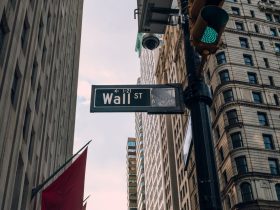“‘While geopolitical concerns haven’t faded this week, the Treasury market appears content to revert to trading the no-landing narrative for the time being.’”
Growing confidence that the U.S. economy can avoid a much-talked-about recession translated into another selloff of government debt on Tuesday that pushed the benchmark 10-year Treasury yield toward 5%.
The 10-year yield
BX:TMUBMUSD10Y,
which impacts a range of consumer and corporate borrowing, jumped 13.7 basis points to 4.846%, its highest 3 p.m. Eastern time level since July 25, 2007. The last time the 10-year yield ended the New York session above 5% was on July 19, 2007, when it reached 5.028%. Also on Tuesday, the 2-year yield
BX:TMUBMUSD02Y
ended at its highest level in 17 years.
The absence of a dramatic escalation in Middle East tensions had traders and investors focused instead on Tuesday’s stronger-than-expected U.S. retail sales for September — yet another sign of the economy’s unexpected resilience. The 10-year yield began to cross 4.72% on Monday on trading volumes that were only 60% of the two-week average, and there were a lack of reasons to go bullish on the underlying security, according to BMO Capital Markets strategists Ian Lyngen and Ben Jeffery. On Tuesday, as the selloff in Treasurys took off again, Lyngen and Jeffery released a note titled “Bears are Back in Town.”
“Technically, we are still in a bit of an air pocket on the 10-year rate,” said Gennadiy Goldberg, head of U.S. rates strategy for TD Securities in New York. He described the “air pocket” as being between 4.5% and 5.3%, the latter of which was the level that prevailed prior to the 2007-2009 financial and economic crisis.
The bar to getting to 5% on the 10-year benchmark rate in the next couple of weeks is low, given the lack of resistance that exists between that mark and the rate’s current level, Goldberg said via phone. Resistance refers to levels above where the 10-year rate currently is which could block further upside moves.
Though investors’ conviction behind trading was fairly low, “the strength of the data is overwhelming the market at moment and is the key driver,” Goldberg said on Tuesday. “The market is currently downplaying geopolitical considerations, which are a powder keg, because there’s been no escalation so far. With President Biden’s visit to the region, I suspect there will be a few days of calm. But if the geopolitical picture escalates, I wouldn’t be surprised to see yields move sharply lower in flight-to-safety moves.”
Read: Biden will travel to Israel Wednesday amid rising concern conflict will spread
Rates on everything from the 3-month Treasury bill
BX:TMUBMUSD03M
to the 30-year bond
BX:TMUBMUSD30Y
were all higher as of late Tuesday, led by 15-basis-point jumps each in 3-
BX:TMUBMUSD03Y,
5-
BX:TMUBMUSD05Y
and 7-year yields
BX:TMUBMUSD07Y.
The 30-year yield ended at 4.95%, the highest close since Aug. 22, 2007. U.S. stocks
DJIA
SPX
COMP
closed mostly lower as investors assessed the renewed rise in market-implied rates.
Through the end of trading on Tuesday, the 10-year yield had jumped 156.1 basis points from its April 5 low of 3.285%.
Read the full article here












Leave a Reply